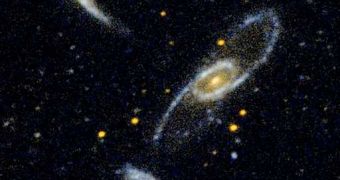This is an interesting job ad posted on the Internet by scientists in the United Kingdom. If you are an amateur astronomer or you simply know a lot about stars and galaxies and have a lot of spare time, they want you to help them sort out an unusual photo album.
It contains over 1 million pictures of galaxies, so volunteers are welcomed to join the project of classifying them as either spiral or elliptical. Helpers would be even more appreciated if they could also note in which direction those galaxies are rotating.
This is the largest galactic census in the world and scientists hope it will give them new insight into the very structure of the known Universe. They estimated that without outside help, it would take years to complete the classification of the photographs, automatically taken by a large digital telescope at the Apache Point Observatory near Sunspot, N.M.
"We're in the golden era of astronomy," said Bob Nichol, an astronomer at the University of Portsmouth in southern England. "We have more data than we can assimilate, and we need help."
There's no shortage of available positions, as 10,000 to 20,000 volunteers are needed for the project to be completed in around one month. The application procedure is fairly simple, as they would need to sign in to a website, then complete a short tutorial. After that, they can start picking galaxies one after another.
Of course, several people will be used to make sure there are no errors or pranks, with the scientists having the last word on any disputes that may appear. It is hoped that this collective work will help astronomers understand how various galaxies form and interact during their evolution.
"At some level, what we learn about these galaxies could tell us something quite fundamental about cosmology and particle physics," Nichol said.

 14 DAY TRIAL //
14 DAY TRIAL //